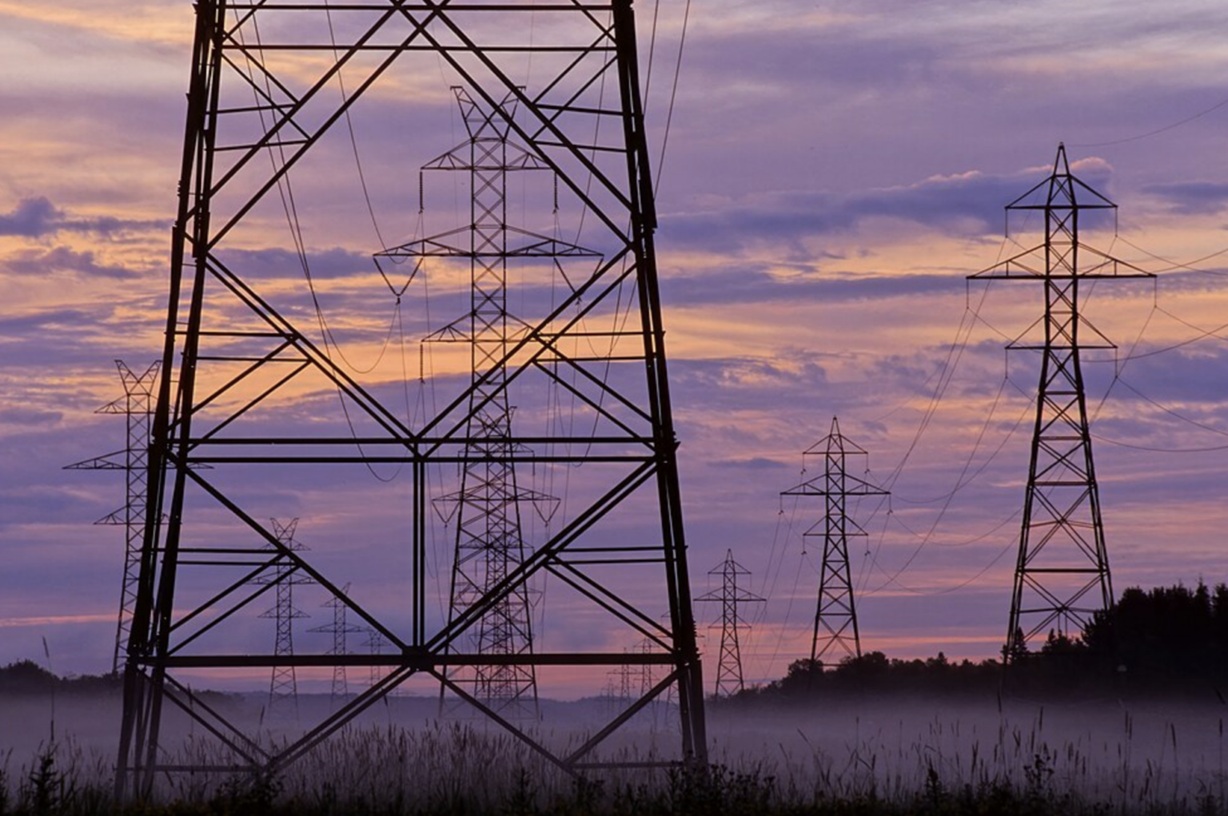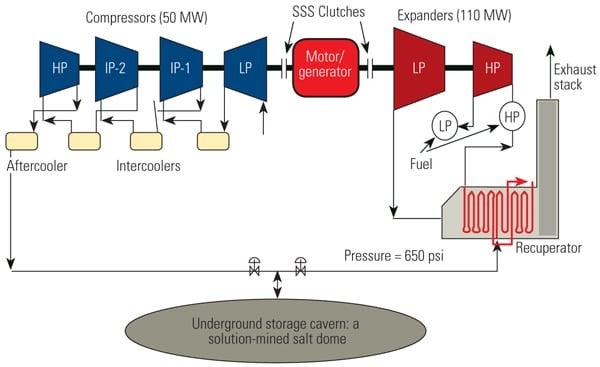Mexico emerges as benchmark for energy storage development in LatAm – ess-news.com

Mexico’s Strategic Advancement in Energy Storage to Achieve Sustainable Development Goals
A report from the Latin American Energy Organization (OLADE), the White Paper on Energy Storage in Latin America and the Caribbean, identifies Mexico as a case of progressive integration of energy storage technologies. The nation’s regulatory framework and strategic planning demonstrate a strong commitment to advancing the Sustainable Development Goals (SDGs), particularly SDG 7 (Affordable and Clean Energy), SDG 9 (Industry, Innovation, and Infrastructure), SDG 11 (Sustainable Cities and Communities), and SDG 13 (Climate Action).
Aligning Energy Policy with SDG 7: Affordable and Clean Energy
In a significant step towards ensuring access to reliable and clean energy, the Mexican government announced a mandate in March 2025 requiring all new solar and wind power plants to integrate battery energy storage systems (BESS). This policy directly supports the targets of SDG 7 by addressing the intermittency of renewable sources, thereby enhancing their reliability and facilitating their large-scale integration into the national grid.
- Mandate Requirement: Battery systems must be equivalent to 30% of the plant’s installed capacity.
- Discharge Capacity: A minimum of three hours of discharge is required.
- Projected Impact: This regulation is expected to add 574 MW of BESS capacity by 2028, strengthening the National Electric System and ensuring a more stable supply of clean energy.
A Multi-faceted Regulatory Framework for Sustainable Infrastructure (SDG 9 & SDG 11)
Mexico has established a comprehensive framework that defines five distinct modalities for energy storage. This classification enables tailored policies and technical regulations that promote resilient infrastructure (SDG 9) and create sustainable, reliable energy systems for communities (SDG 11).
- Storage Associated with Renewable Generation: Systems linked to solar and wind plants to manage production variability and supply energy during peak demand. This directly contributes to SDG 7 and SDG 13 by maximizing the use of clean energy and reducing reliance on fossil fuels.
- Storage at Load Centers: Implemented by large industrial and commercial users to optimize electricity consumption and improve energy efficiency. This modality supports sustainable industrialization (SDG 9) and reduces the strain on urban power grids (SDG 11).
- Standalone Storage Systems: Projects operating as independent grid assets to provide frequency regulation, voltage control, and emergency backup. These systems are crucial for building the resilient infrastructure central to SDG 9.
- Storage in Distribution Networks: Deployed to reinforce electrical infrastructure, improve supply quality, and reduce technical losses. This enhances the sustainability and reliability of urban and rural communities, a key target of SDG 11.
- Storage in Microgrids and Isolated Systems: Designed to provide reliable electricity to rural, island, and remote communities. This application is fundamental to achieving universal energy access under SDG 7 and reduces dependence on polluting fossil fuels like diesel, advancing SDG 13.
Long-Term Vision for Climate Action and Grid Modernization (SDG 13 & SDG 9)
The National Electricity System Development Program (PRODESEN 2024–2038) further solidifies Mexico’s commitment to a sustainable energy future. The program identifies energy storage as a strategic pillar for grid stability and a critical component of its climate action strategy.
- Strategic Importance: PRODESEN recognizes energy storage as essential for integrating intermittent renewable sources and enhancing grid reliability, which is foundational to climate change mitigation efforts (SDG 13).
- Future Capacity Needs: The plan projects a requirement of 8.4 GW of energy storage capacity by 2038 to support a modernized, low-carbon electricity system, aligning with the goals for innovative and sustainable infrastructure (SDG 9).
By combining specific regulations, a clear storage mandate, and a long-term strategic vision, Mexico is establishing itself as a regional benchmark for developing an energy sector that is not only modern and reliable but also fully aligned with the global Sustainable Development Goals.
Analysis of Sustainable Development Goals in the Article
1. Which SDGs are addressed or connected to the issues highlighted in the article?
- SDG 7: Affordable and Clean Energy: The article’s central theme is the integration of renewable energy (solar and wind) into Mexico’s national grid through energy storage systems. This directly supports the goal of ensuring access to affordable, reliable, sustainable, and modern energy for all.
- SDG 9: Industry, Innovation, and Infrastructure: The text discusses the development of resilient and sustainable infrastructure, specifically the National Electric System. It highlights innovation through the adoption of battery energy storage systems (BESS) and upgrading infrastructure to support clean energy.
- SDG 11: Sustainable Cities and Communities: By improving the reliability of the electricity supply, strengthening grid stability, and providing power to remote communities through microgrids, the initiatives described contribute to making communities more resilient and sustainable.
- SDG 13: Climate Action: The policies and infrastructure projects are designed to facilitate a greater share of renewable energy, which is a key strategy for mitigating climate change by reducing dependence on fossil fuels. The article mentions that storage in microgrids helps reduce dependence on diesel.
2. What specific targets under those SDGs can be identified based on the article’s content?
-
SDG 7: Affordable and Clean Energy
- Target 7.1: Ensure universal access to affordable, reliable and modern energy services. The article mentions the use of storage in “microgrids and isolated systems” to support “rural communities, island regions, and remote areas, ensuring a reliable electricity supply.”
- Target 7.2: Increase substantially the share of renewable energy in the global energy mix. The entire article focuses on measures to manage the “intermittency” of solar and wind power, with a specific mandate that “all solar and wind power plants must integrate battery systems,” thereby enabling greater integration of renewables.
- Target 7.b: Expand infrastructure and upgrade technology for supplying modern and sustainable energy services. The article details Mexico’s plan to build out its energy storage infrastructure, projecting a need for “8.4 GW of energy storage capacity by 2038” and adding “574 MW of BESS by 2028.”
-
SDG 9: Industry, Innovation, and Infrastructure
- Target 9.1: Develop quality, reliable, sustainable and resilient infrastructure. The initiatives aim at “strengthening the operation of the National Electric System,” enhancing “grid stability,” and improving the “reliability of the national grid.”
- Target 9.4: Upgrade infrastructure and retrofit industries to make them sustainable, with increased resource-use efficiency. The article describes “storage at load centers, typically implemented by large industrial or commercial consumers,” which aims to “optimize electricity consumption, reduce peak demand, and improve energy efficiency.”
-
SDG 11: Sustainable Cities and Communities
- Target 11.b: By 2020, substantially increase the number of cities and human settlements adopting and implementing integrated policies and plans towards… resilience to disasters… The use of standalone storage systems to provide “backup power in emergencies” directly contributes to the resilience of communities and their essential infrastructure.
-
SDG 13: Climate Action
- Target 13.2: Integrate climate change measures into national policies, strategies and planning. The article explicitly mentions the “National Electricity System Development Program (PRODESEN 2024–2038)” which identifies energy storage as a “strategic pillar” to support renewable energy integration, demonstrating a national strategy aligned with climate goals.
3. Are there any indicators mentioned or implied in the article that can be used to measure progress towards the identified targets?
-
Indicators for SDG 7
- Share of renewable energy (Target 7.2): The mandate requiring solar and wind plants to integrate battery systems equivalent to “30% of their installed capacity” is a specific policy indicator.
- Renewable energy capacity (Target 7.b): The projected addition of “574 MW of battery energy storage systems (BESS) by 2028” and the long-term goal of “8.4 GW of energy storage capacity by 2038” are quantifiable indicators of infrastructure expansion.
- Access to electricity (Target 7.1): The implementation of microgrids in “rural communities, island regions, and remote areas” implies a measurable increase in reliable electricity access for these populations, even if specific numbers are not provided.
-
Indicators for SDG 9
- Infrastructure development (Target 9.1): The five defined storage modalities (linked to renewable plants, load centers, standalone, distribution networks, and microgrids) serve as a qualitative indicator of a comprehensive infrastructure development plan.
- Energy efficiency in industry (Target 9.4): The adoption of storage systems by “large industrial or commercial consumers” to optimize consumption can be measured to track progress in energy efficiency.
-
Indicators for SDG 13
- National climate policies (Target 13.2): The existence and content of the “National Electricity System Development Program (PRODESEN 2024–2038)” and the government’s “battery storage mandate” are direct indicators of the integration of climate measures into national planning.
4. Summary Table of SDGs, Targets, and Indicators
| SDGs | Targets | Indicators |
|---|---|---|
| SDG 7: Affordable and Clean Energy |
7.1: Ensure universal access to affordable, reliable and modern energy services.
7.2: Increase substantially the share of renewable energy in the global energy mix. 7.b: Expand infrastructure and upgrade technology for supplying modern and sustainable energy services. |
– Implementation of storage in microgrids for rural and remote areas.
– Mandate for renewable plants to integrate battery systems equivalent to 30% of their installed capacity. – Projected addition of 574 MW of BESS by 2028 and 8.4 GW by 2038. |
| SDG 9: Industry, Innovation, and Infrastructure |
9.1: Develop quality, reliable, sustainable and resilient infrastructure.
9.4: Upgrade infrastructure and retrofit industries to make them sustainable, with increased resource-use efficiency. |
– Development of five defined storage modalities to strengthen the National Electric System.
– Adoption of storage at load centers by industrial consumers to improve energy efficiency. |
| SDG 11: Sustainable Cities and Communities | 11.b: Implement integrated policies and plans towards resilience. | – Use of standalone storage systems to provide backup power in emergencies. |
| SDG 13: Climate Action | 13.2: Integrate climate change measures into national policies, strategies and planning. | – Existence of the National Electricity System Development Program (PRODESEN 2024–2038) and the battery storage mandate as part of national strategy. |
Source: ess-news.com
What is Your Reaction?
 Like
0
Like
0
 Dislike
0
Dislike
0
 Love
0
Love
0
 Funny
0
Funny
0
 Angry
0
Angry
0
 Sad
0
Sad
0
 Wow
0
Wow
0



















































.jpg.webp?itok=0ZsAnae9#)


























